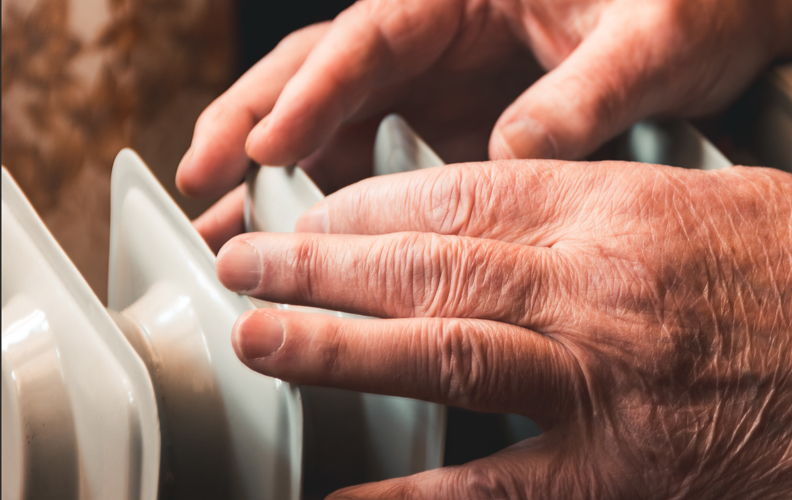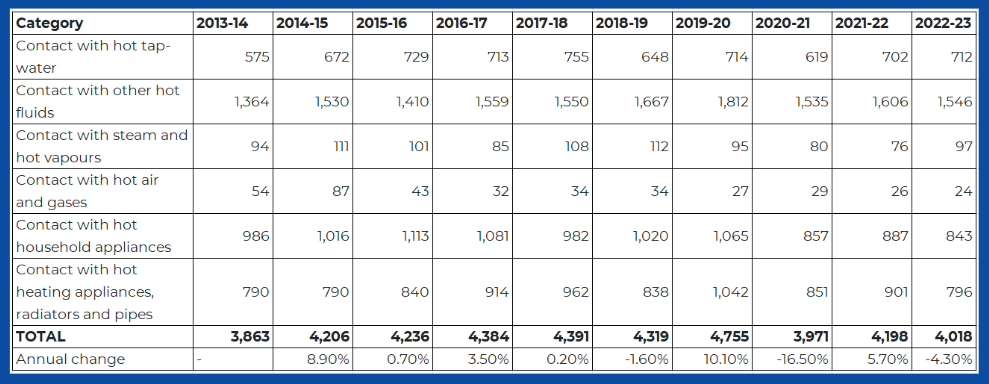Burns and scalds
Hot water scalds and contact burns - the facts
- Children and the elderly are most vulnerable to serious repercussions from scalds and burns
- Never use ice to treat a scald or burn - run lukewarm or cool water on an affected area for 20 minutes
- Almost half of acute burn injuries are down to scalds
- Installing Thermostatic Mixing Valves (TMVs) close to water outlets reduces scalding risks in the home
- Scalds can result in years of management through skin graft surgery
- Low surface temperature heat emitters and reduced flow temperatures protect from contact burns
Managing scalding risk and legionella
Have you ever used the taps in a public toilet, shopping complex, restaurant or pub and wondered why the water temperature is too hot to use to wash your hands? Perhaps, you have seen warning signs advising that that you the water is extremely hot and thought to yourself that it is a bit odd?
The reason for this is because by ensuring the temperature of the water is 60°C or over, bacteria such as Legionella are killed off. This type of bacteria grows in conditions where the water temperature is between 20°C and 45°C degrees. If it is inhaled in the form of water droplets, or vapour, it could
develop into Legionnaires’ disease, which is a potentially fatal type of pneumonia.
This does highlight that there is a conflict in requirements when it comes to hot water storage and hot water use. It may be ideal to have water heated and stored at high temperatures to control and kill bacteria, but it can cause severe scalding injuries in a matter of seconds. Likewise, water that is heated and stored at non-scalding temperatures provides the ideal environment for bacteria growth.
It’s a bit of a ‘Catch-22’ situation and it seems that in balancing these possibilities, many providers of facilities opt for customers’ risking a scald than contracting Legionnaires’ Disease, presumably on the basis that it is easier for an individual to take their own action to prevent scalding.
Scalding injuries are preventable
In the home, hot water will also be stored at around 60°C, meaning that by the time it comes out of the tap you could expect it to be around 55°C. If you were to get into a bath that had been run at that temperature, without adding any cold water, it would only take seconds to get a serious deep tissue burn. In the case of more vulnerable people, such as infants and the elderly, the outcome from this can be particularly severe.
The Department of Health and Social Care recommends the temperature for bathing should be no higher than 43°C and showering at no higher than 41°C. For infants, the temperature should be no higher than 37°C.

The use of TMVs
When it comes to showering, a thermostatically controlled shower is the best option. Essentially, the thermostatic mixing valve (TMV) in the shower takes a hot and cold supply and blends the water to a ‘safe’, controlled temperature at the outlet. Most TMVs also have a failsafe mechanism so if there is a failure with either the hot or cold water supplies the valve will close off. This allows virtually no water to pass through, protecting the user and highlighting the fact that there is a problem with the plumbing system.
Many homes also have manual mixing valves at sinks, washbasins, and baths, which are helpful in controlling temperatures, but it must be remembered that temperatures can still fluctuate, especially if there is a drop in water pressure. Always carefully test the water temperature before you get into the bath or before placing an infant into it.
In April 2010, revisions to Part G of the Building Regulations (Hot water supply and systems) for England and Wales, included the requirement that baths (subject to Building Regulations) in new build properties are fitted with a protective device (i.e. a thermostatic mixing valve) to limit the temperature of hot water. Similar regulations have been in force in Scotland since 2006.
If you live in an older property, particularly if it is also inhabited by young children, elderly or otherwise vulnerable people who may have mobility problems or other difficulties, it is recommended having TMV’s installed for all water outlets within the property. However, this is an area where the conflict between delivering water at safe temperatures and not aiding legionella bacteria growth must be taken into consideration.
The location of the TMV is critical and space storing water between the TMV and outlet potentially provides a breeding ground for the bacteria. For this reason, it is recommended that:
- TMVs are installed as close to the water outlet as possible, mixing water at the point of use where possible.
- Multiple TMVs should be used in the case of multiple outlets; use of a single TMV increases the risk of bacteria growth.
Contact burns
Plumbing and heating system contact burns are also a serious risk to health, particularly for the young and the elderly, with approximately one-third of those needing hospital treatment each year being either under the age of 5 or over the age of 84. There are steps you can take to protect members of your household from the risks stemming from these types of injuries.
- Install a low-temperature heating system, with the further benefit of reducing your energy consumption.
- Consider installing low surface temperature radiators or radiator covers if you have particularly vulnerable people within your home.
- Ensure, wherever possible, heating appliances are out of reach.
- Insulate any low-level hot pipework.

Servicing and maintenance
TMV’s are not ‘fit and forget’ devices and will need to be regularly serviced and maintained to help ensure that they are still delivering water at the required temperature and heating systems should be regularly checked to make sure they are meeting your requirements.
Many consumers already have their boiler serviced on an annual basis. The CIPHE recommends that this is extended to include the whole heating and hot water storage and distribution system.
Always use a professional plumber as they will make sure the TMV is fitted so that it can be easily accessed for servicing.
Completed consultant episodes for scalds and burns (NHS England figures)

Find a plumber or heating engineer
CIPHE members are professional, competent and skilled plumbing and heating engineers. Find yours today.
Find a PlumberTMV Manufacturers
The CIPHE and our objectives are supported by over 150 companies manufacturing and supplying quality products. Find TMVs by following the link below.
View Industrial Associate directoryPlumbing health hazards hub
When plumbing and heating systems are working correctly, they make our lives healthier and happier. However, when things go wrong, the results can be deadly.
Plumbing health hazards